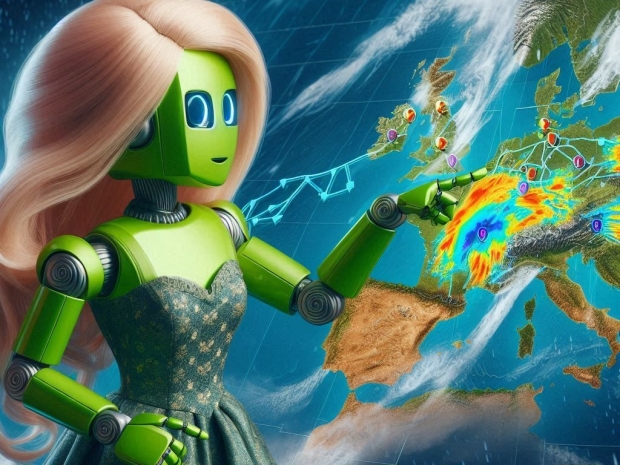Dubbed StormCast, the system is a generative AI model designed to emulate high-fidelity atmospheric dynamics. Nvidia Research claims it can provide reliable weather predictions at the mesoscale — a critical range for disaster planning and mitigation, larger than storms but smaller than cyclones.
Detailed in a collaborative paper with the Lawrence Berkeley National Laboratory and the University of Washington, StormCast emerges when extreme weather is causing significant loss of life, property destruction, and over $150 billion in annual damages in the US.
StormCast exemplifies how generative AI drives significant advancements in climate research and actionable weather prediction, addressing some of the most pressing challenges of our time.
The system will work with Nvidia's Earth-2 platform, a digital twin cloud system combining AI, physical simulations, and computer graphics, facilitates the simulation and visualisation of weather and climate predictions globally with unprecedented accuracy and speed. This works with something Nvidia calls CorrDiff, a generative AI model that can super-resolve 25-kilometre atmospheric data down to 2 kilometres, achieving this 1,000 times faster and with 3,000 times less energy than traditional methods.
StormCast now adds hourly autoregressive prediction capabilities to CorrDiff, enabling it to forecast future outcomes based on past data.
Global climate research often begins at a regional level, where physical hazards can dramatically. Reliable numerical weather prediction at this scale requires substantial computational resources due to the high spatial resolution needed to represent mesoscale fluid-dynamic motions.
Regional weather prediction models, or convection-allowing models (CAMs), are essential for meteorologists to track storm evolution and structure. CAMs help predict tornado likelihood based on storm structure and convective mode, and they inform flash-flooding projections in vulnerable coastal areas.
Machine learning models trained on global data have emerged as valuable emulators of numerical weather prediction models, improving early-warning systems for severe events. These models typically have a spatial resolution of about 30 kilometres and a temporal resolution of six hours. StormCast, using generative diffusion, enhances this to a 3-kilometer hourly scale.
Despite being in its early stages, StormCast, when used with precipitation radars, offers forecasts with up to six hours lead times that are up to 10 per cent more accurate than NOAA's state-of-the-art 3-kilometer operational CAM. Its outputs exhibit realistic heat and moisture dynamics, predicting over 100 variables such as temperature, moisture concentration, wind, and rainfall radar reflectivity at multiple altitudes. This enables scientists to confirm the realistic 3D evolution of a storm's buoyancy, a first in AI weather simulation.
NVIDIA researchers trained StormCast on approximately three-and-a-half years of NOAA climate data from the central US, using NVIDIA accelerated computing to speed up calculations.

